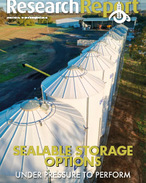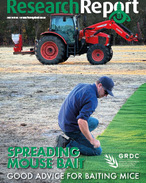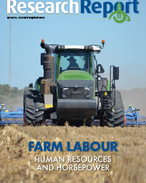This article is 7 years old. Images might not display.
Minister Hartsuyker said India was Australia’s fifth-largest export market in 2016-17, with exports valued at over $3.1 billion.
“India’s expanding middle class presents a wealth of opportunities for Australian suppliers of high-quality food and services, as well as expertise and technology that can increase the efficiency of food value chains in India,” he said.
“The country is already a significant market for Australian produce including chickpeas, wheat and lentils.”
Minister Hartsuyker visited food processor Haldiram Snacks and the site of Bigbasket, India’s first comprehensive online grocery store to better understand developments in India’s food e-retailing and consumer trends.
“There is huge potential for both countries to build on mutually-beneficial trade and I am eager to promote Australia’s premium agricultural sectors and help pave the way for new business opportunities.
“Exciting opportunities exist to expand trade in oilseeds, edible oils, and horticulture, particularly tree nuts through increased demand for our counter seasonal Australian production.”
According to GrainGrowers’ recent August report Indian Grain Market Opportunities for Australia, India is one of the world’s most dominant grain producers and consumers and the Australian grain industry is poised to benefit from India’s growing demand for grains.
Report author Luke Mathews from GrainGrowers said total Indian grain consumption has averaged 232.1 million tonnes over the past five years, and has grown at an average rate of 3.8 million tonnes per annum over the past decade.
“Despite historic self-sufficiency, increasing rates of demand growth – driven population and changing diets – combined with slowing rates of production growth, will result in India emerging as a key market for Australian grains, oilseeds and pulses in the future,” Mr Mathews said.
“The development of a more intensive livestock industry in coming years will likely exacerbate India’s need for imports to help meet future grain consumption requirements,” he said.
According the report India takes around 80 per cent of Australian chickpea exports, and has largely been responsible for the recent growth in the Australian pulse industry.
Indian demand is now also beginning to shape the Australian wheat market.
“Historically an ad-hoc importer of wheat due to local seasonally-induced production shortages, India is now shaping as a structural net-importer of wheat,” the report noted.
Australian wheat exports to India reached 920,000 tonnes in 2016, and have surged to more than 1.7 million tonnes in the first six months of 2017, including a monthly record of 874,000 tonnes in January 2017.























